Gujarati cuisine, a vibrant reflection of Gujarat's rich culture and heritage, is celebrated for its unique flavors, wholesome ingredients, and diverse range of vegetarian delights. Characterized by a harmonious balance of sweet, sour, and spicy tastes, Gujarati dishes showcase a creative blend of spices, lentils, vegetables, and grains. From the iconic dhokla and the comforting undhiyu to the indulgent khandvi and the aromatic dal dhokli, each dish offers a tantalizing experience for the palate.
Dabeli
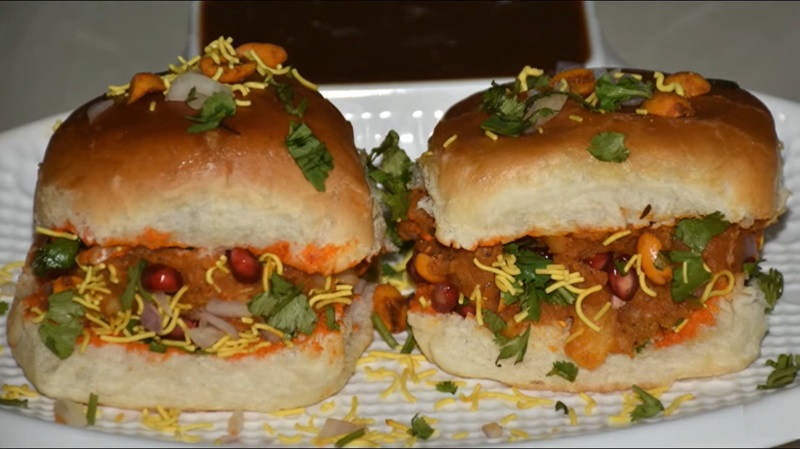
Dabeli, a beloved street food originating from the Kutch region of Gujarat, India, is a flavorful snack renowned for its unique blend of spices and textures. It features a spiced mashed potato filling seasoned with a special dabeli masala, tamarind chutney, garlic chutney, and roasted peanuts, all stuffed inside a soft, buttered pav (bread roll). The stuffed pav is then toasted on a griddle until crispy and golden. Dabeli is often garnished with pomegranate seeds, sev (crunchy chickpea flour noodles), and fresh cilantro, offering a delightful combination of sweet, tangy, and spicy flavors that tantalize the taste buds.
Dhokla
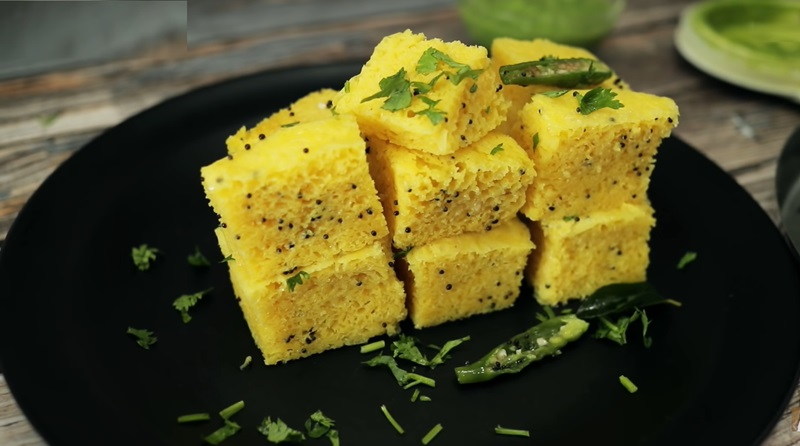
Dhokla is a steamed savory cake made from fermented rice and chickpea flour, resulting in a soft and spongy texture. Dhokla is known for its tangy and slightly sweet flavor, making it a perfect snack or breakfast option. The preparation of Dhokla involves soaking rice and chickpea flour overnight, followed by mixing it with yogurt and spices like turmeric, ginger, and green chili. The batter is then fermented for a few hours to enhance the taste. The fermented batter is then steamed in a special Dhokla steamer until it becomes fluffy and cooked. Once cooked, Dhokla is cut into bite-sized pieces and garnished with a tempering of mustard seeds, curry leaves, and green chilies. It is often served with a side of tangy coriander chutney or sweet tamarind chutney.
Khandvi
-1708444696.jpg)
Khandvi is a popular Gujarati snack that is loved for its unique texture and flavors. Made from a batter of gram flour (besan), buttermilk, and spices, this dish is known for its delicate and silky rolls. The preparation of Khandvi involves cooking the batter on a flat pan until it thickens, and then spreading it thinly and evenly to cool and set. Once cooled, the thin sheets are rolled up into tight cylinders, creating beautiful swirls that are a visual delight. Khandvi is typically garnished with a tempering of mustard seeds, curry leaves, and grated coconut, which adds a burst of flavors to the already delicious rolls. The dish is often served as an appetizer or a tea-time snack, and is enjoyed for its tangy and mildly spiced taste. The soft and melt-in-your-mouth texture of Khandvi makes it a delight to eat, and it is often paired with a side of green chutney or tamarind chutney for added zing.
Bhel Puri
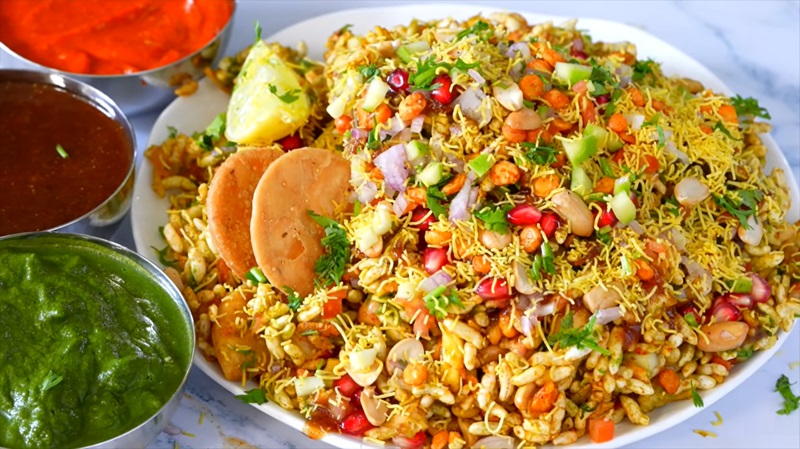
Bhel puri is a popular and iconic street food dish from the state of Gujarat, located in western India. It is a delicious and flavorful mixture of puffed rice, crisp sev (fried noodles), chopped onions, tomatoes, and coriander leaves, all tossed together with tangy tamarind and spicy coriander chutneys. Additional ingredients such as boiled potatoes, diced raw mango, and roasted peanuts can also be added to enhance the taste and texture. This dish is known for its explosion of flavors and textures. The crunchy puffed rice and sev provide a delightful contrast to the juicy tomatoes and onions, while the combination of sweet and tangy chutneys adds a burst of flavor.
Puran Poli
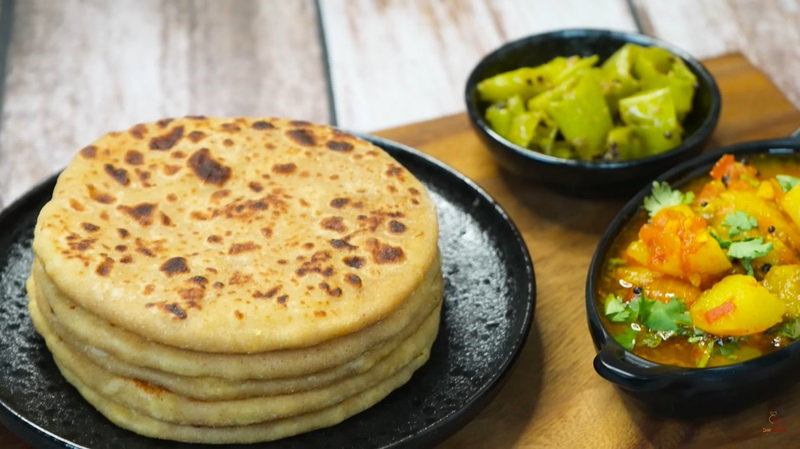
Puran Poli, a traditional flatbread, is a delightful fusion of sweet and savory flavors. It consists of a soft, thin wheat dough filled with a sweet mixture of cooked lentils (usually chana dal), jaggery, cardamom, and nutmeg. The filling, known as puran, is encased within the dough and rolled out into thin circles before being cooked on a griddle with ghee until golden brown.
Undhiyu
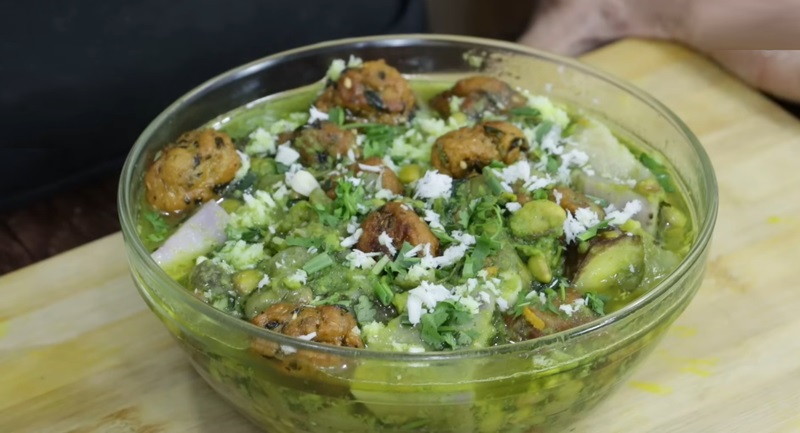
Undhiyu is a popular traditional dish hailing from the state of Gujarat, India. It is a wholesome and flavorful dish that is typically prepared during the winter season. Undhiyu is a combination of various vegetables and spices, making it a perfect medley of flavors and textures. The star ingredients of Undhiyu are root vegetables like yam, sweet potato, and surti papdi (a type of flat bean), along with eggplant, green peas, and green bananas. These vegetables are stuffed with a spicy mixture made from gram flour, spices, and fresh herbs. The stuffed vegetables are then cooked in a clay pot, called a handi, over a slow flame. Undhiyu is cooked with minimal oil, making it a healthy choice. The dish is also infused with aromatic spices like mustard seeds, cumin, turmeric, and asafoetida, which contribute to its distinct flavor.
Bakarwadi
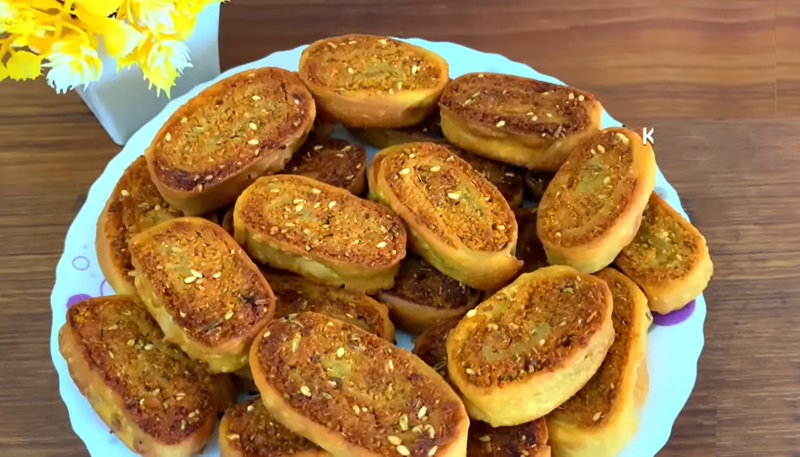
Bakarwadi is a crispy and spicy roll that is filled with a flavorful mixture of spices, herbs, and nuts. The preparation of Bakarwadi involves a multi-step process. First, a dough is made using a combination of wheat flour, gram flour, and spices like turmeric, red chili powder, and cumin. This dough is then rolled out into thin circles and spread with a spicy filling. The filling typically consists of a mixture of ground peanuts, sesame seeds, grated coconut, and a blend of aromatic spices such as coriander, fennel, and cinnamon. The dough is then rolled into a tight spiral and cut into small pieces. Finally, the Bakarwadi is deep-fried until it turns golden brown and crispy. The end result is a savory and crunchy snack that is bursting with flavors.
Gujarati Kadhi
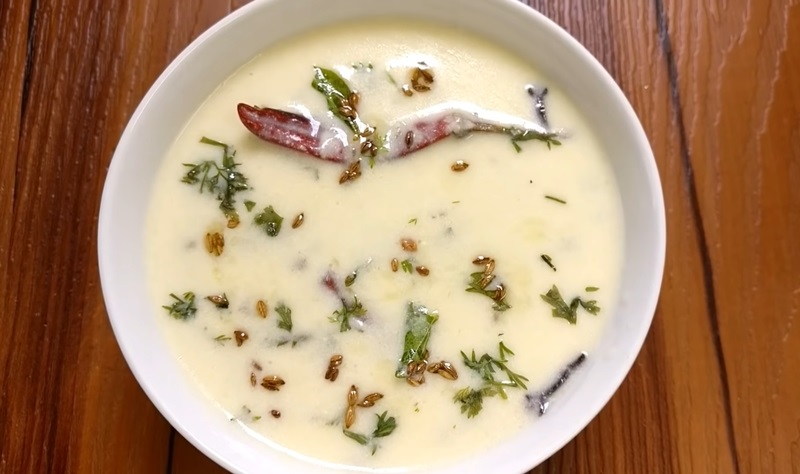
Gujarati Kadhi is a tangy yogurt-based soup hailing from the western Indian state of Gujarat. This comforting dish features a blend of yogurt, gram flour (besan), and water, seasoned with mustard seeds, cumin seeds, curry leaves, and green chilies tempered in ghee. It's often enriched with ginger, turmeric, and sometimes jaggery for a touch of sweetness. The mixture is simmered until it reaches a creamy consistency, offering a perfect balance of sour and savory flavors. Gujarati Kadhi is typically served hot alongside steamed rice or khichdi, embodying the culinary tradition of Gujarat and providing a satisfying and nutritious meal.
Basundi
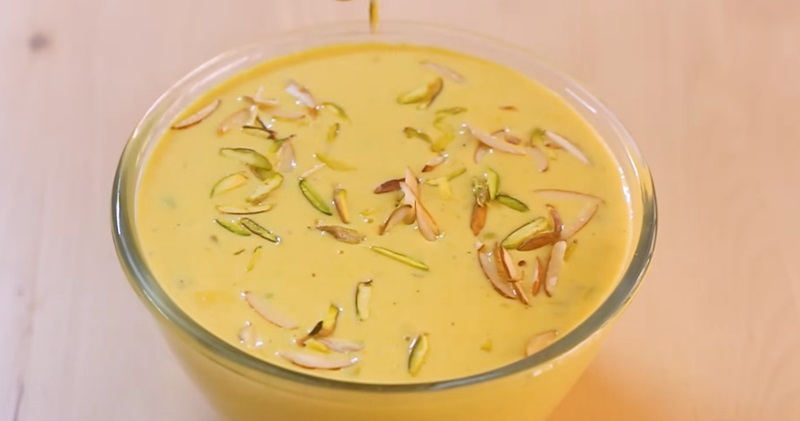
Basundi is a traditional and indulgent dessert from the western Indian state of Gujarat. It is made by simmering milk on low heat until it reduces to a creamy and thick consistency. This luscious sweet dish is flavored with cardamom, saffron, and garnished with chopped nuts like almonds and pistachios. To prepare Basundi, whole milk is simmered for a long time, allowing it to thicken naturally. The process requires constant stirring to prevent the milk from sticking to the bottom of the pan. As the milk reduces, the natural sugars caramelize, giving Basundi its rich and sweet flavor. Once the desired consistency is achieved, the dish is flavored with cardamom powder and a pinch of saffron, which adds a delightful aromatic touch. Finally, it is garnished with a generous amount of chopped nuts, adding a delightful crunch to the creamy dessert. Basundi is typically served chilled and enjoyed on festive occasions or as a special treat.
Thepla

Thepla, a beloved Gujarati flatbread, is renowned for its versatility, flavor, and convenience. Made from a mixture of whole wheat flour, gram flour. grated vegetables like fenugreek leaves (methi), and spices such as turmeric, cumin, and chili powder, the dough is kneaded with yogurt or water. Each portion is rolled into thin rounds and cooked on a griddle with ghee or oil until golden brown and crisp. Thepla is a popular choice for breakfast, lunch, or snacks, enjoyed with accompaniments like pickles, chutneys, or yogurt. Its hearty texture and aromatic spices make it a cherished part of Gujarati cuisine and culture.
Umbadiyu
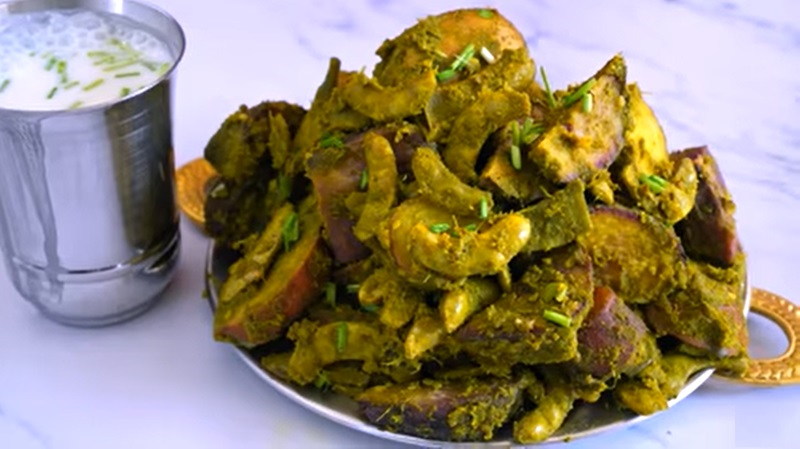
Umbadiyu is a hearty and flavorful one-pot dish that is typically prepared during the winter season. Umbadiyu is made with a variety of vegetables, herbs, and spices, making it a nutritious and wholesome meal. The dish typically includes ingredients like yam, purple yam, sweet potato, raw banana, brinjal, and pigeon peas. These vegetables are seasoned with a blend of aromatic spices such as ginger, garlic, chili, and turmeric. The highlight of Umbadiyu is the use of fresh green garlic, which imparts a distinct flavor to the dish. The garlic is crushed and added to the vegetables, along with other herbs like fenugreek leaves and coriander leaves. The preparation of Umbadiyu involves slow cooking the vegetables in an earthen pot, allowing the flavors to meld together. The dish is traditionally cooked over a wood fire, adding a smoky essence to the final dish. Umbadiyu is served hot, garnished with a drizzle of ghee (clarified butter) and accompanied by traditional Gujarati breads like rotla or bajra na rotla.
Khakhra
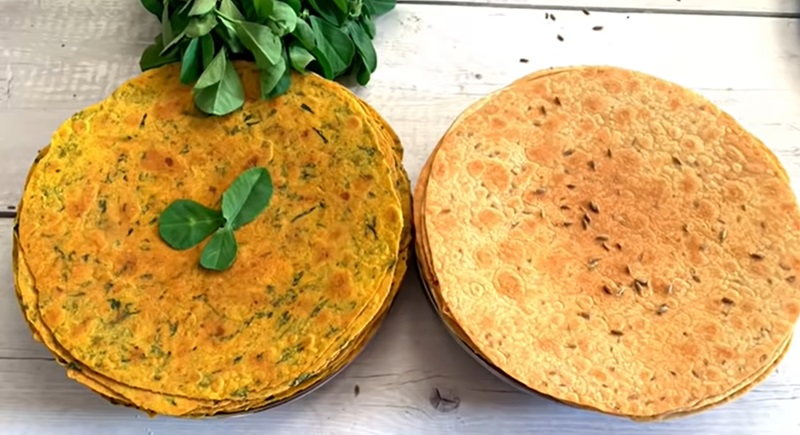
Khakhra, a beloved snack from Gujarat, India, is a thin, crispy flatbread crafted from whole wheat flour and spices. The dough is rolled into thin discs and roasted on a griddle until it becomes golden and crunchy. Khakhra comes in various flavors, including masala, methi (fenugreek), jeera (cumin), and more. It's often seasoned with a sprinkle of salt or sesame seeds before roasting to enhance its flavor.
Khaman
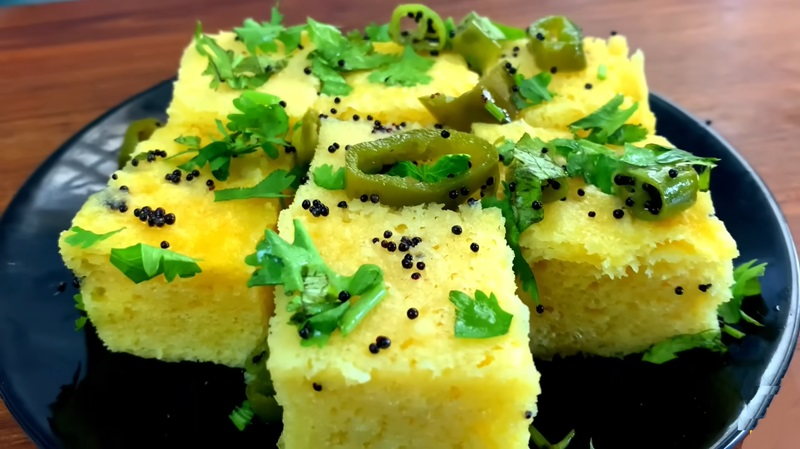
Khaman is a steamed savory cake made from gram flour (besan) and is typically served as a snack or breakfast item. Khaman is loved for its soft and spongy texture, which is achieved by using a combination of ingredients and a specific cooking technique. To prepare Khaman, gram flour is mixed with yogurt, turmeric powder, ginger paste, and a few other spices. This batter is then steamed to perfection, resulting in a fluffy and airy texture. Once cooked, the Khaman is cut into pieces and tempered with mustard seeds, curry leaves, and green chilies for added flavor. After tempering, a mixture of lemon juice, sugar, and water is poured over the Khaman pieces, creating a sweet and sour taste that balances the spices beautifully. Khaman is often garnished with fresh coriander leaves and grated coconut, adding a touch of freshness and enhancing its visual appeal.
Mohanthal
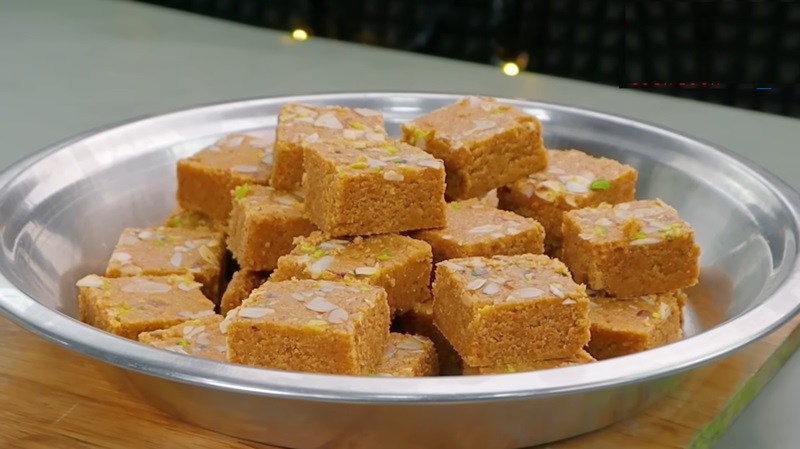
Mohanthal, a delectable sweet from the Indian state of Gujarat, is a rich and dense fudge-like confection. It is primarily made from chickpea flour (besan), ghee, sugar, and flavored with cardamom and saffron. The besan is roasted in ghee until golden brown, then mixed with sugar syrup to form a thick, creamy consistency. It is often garnished with chopped nuts like almonds or pistachios. Mohanthal embodies the essence of Gujarati cuisine, with its luxurious texture and indulgent sweetness making it a popular choice for festivals, celebrations, and special occasions, symbolizing warmth, hospitality, and culinary heritage.
Fafda
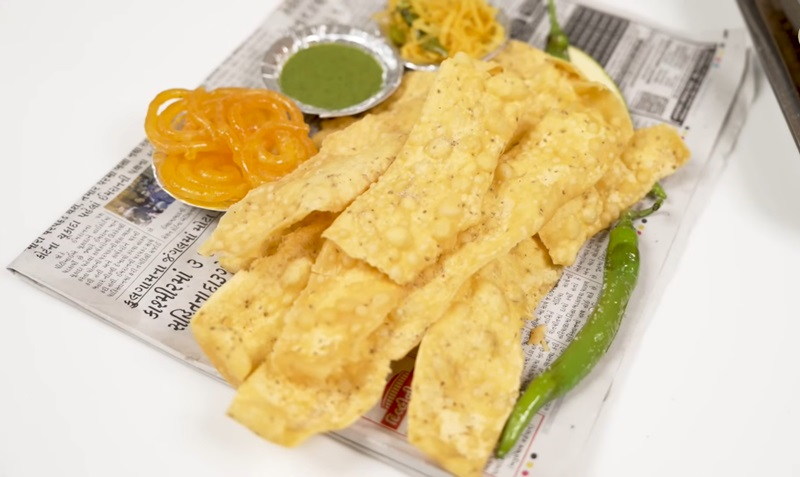
Fafda is a popular and traditional Gujarati snack that is loved by people of all ages. It is a crispy and savory dish made from gram flour (besan) and a blend of aromatic spices. Fafda is known for its unique texture and flavor that makes it a perfect accompaniment to a cup of hot tea. The preparation of Fafda involves mixing besan with water, spices like turmeric, ajwain (carom seeds), and black pepper, and kneading it into a smooth dough. The dough is then rolled into thin strips and deep-fried until golden brown and crispy. The end result is a deliciously crunchy and addictive snack. Fafda is typically served with a tangy and spicy chutney made from tamarind, jaggery, and a variety of spices. It is also enjoyed with a side of fried green chilies and a steaming cup of masala chai.
Ghari
-1708489494.jpg)
Ghari is a traditional sweet dish originating from the state of Gujarat in India. It is a popular dessert, especially prepared during the festival of Diwali. Ghari is a delicious and rich sweet made with a filling of khoa (a dairy product similar to condensed milk) and dry fruits. The outer covering of the dish is made from refined flour, ghee (clarified butter), and a pinch of cardamom powder for flavor. The process of making Ghari involves kneading the dough and shaping it into small round discs. These discs are then filled with the sweet khoa mixture and sealed properly. The filled discs are then deep-fried in ghee until they turn golden brown and crispy. Once fried, the Ghari is taken out and left to cool. The final result is a mouthwatering sweet with a crispy outer layer and a delectable, creamy filling. It is often garnished with powdered sugar and chopped nuts before serving.
Dal Dhokli
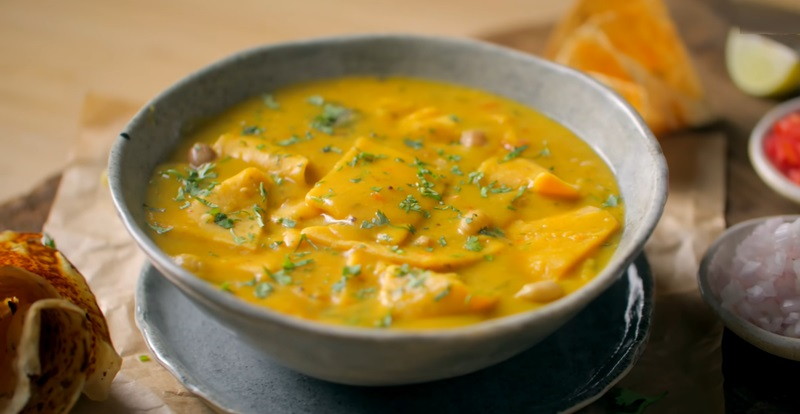
Dal dhokli is a traditional Gujarati dish that is loved for its simplicity and heartiness. It is a one-pot meal that combines the goodness of lentils and wheat flour dumplings, cooked in a flavorful spiced broth. To prepare dal dhokli, the lentils are first cooked until soft and then seasoned with a blend of aromatic spices like cumin, turmeric, and ginger. The wheat flour is kneaded into a soft dough and rolled out into thin discs, which are then cut into diamond-shaped pieces. These dumplings are then added to the simmering lentil broth and cooked until they become tender. The dish is often garnished with a tadka (tempering) of ghee, mustard seeds, and curry leaves, which adds a rich and fragrant touch to the overall flavor. It is typically served hot and enjoyed with a side of yogurt, pickle, or papad.
Locho
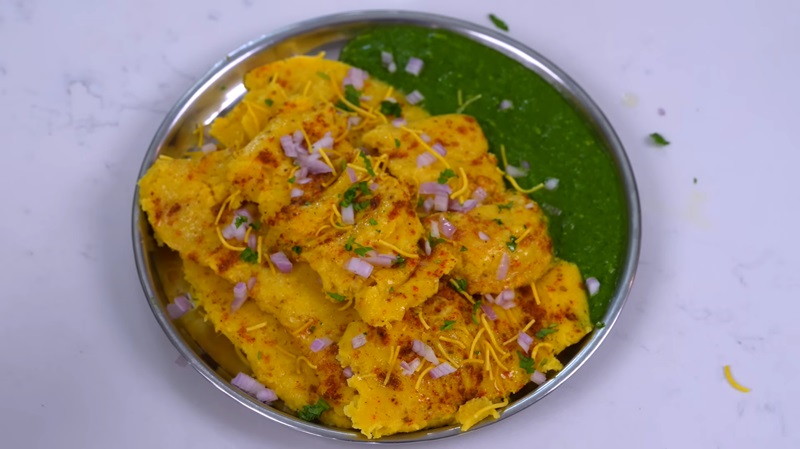
Locho is a savory snack that is typically made from fermented batter made with a combination of gram flour (besan) and yogurt. The batter is then steamed to create a soft and fluffy texture. Locho is traditionally served with a variety of chutneys and garnished with spices like red chili powder, cumin powder, and chaat masala. The dish is commonly enjoyed as a breakfast or evening snack. It is loved for its tangy and spicy taste. Locho can be customized by adding different toppings such as sev, chopped onions, coriander leaves, and grated cheese.
Muthia
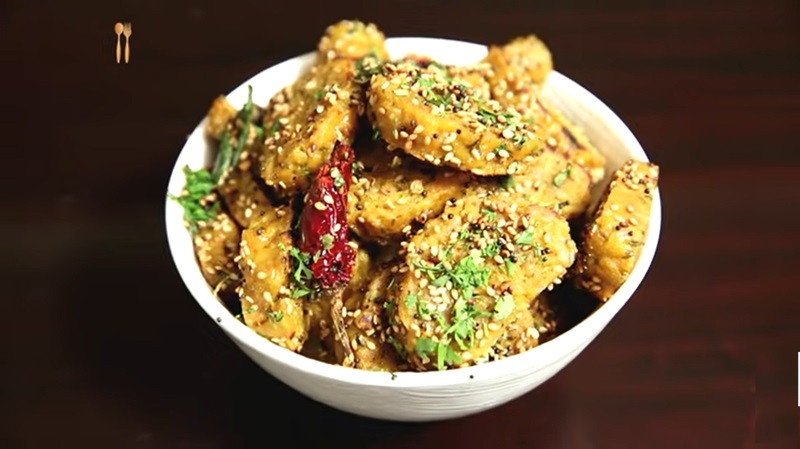
Muthia is a traditional Gujarati dish that is both delicious and healthy. It is a steamed dumpling made from a mixture of flours, spices, and vegetables. The word "muthia" itself means 'fist' in Gujarati, as the dumplings are shaped like small cylindrical logs, resembling the shape of a fist. The base of muthia is typically made from a combination of wheat flour, chickpea flour, and semolina, which gives it a light and fluffy texture. To this mixture, various vegetables like bottle gourd, fenugreek leaves, spinach, or grated carrots are added, along with spices like turmeric, chili powder, and cumin seeds. Some versions of muthia also include sesame seeds or grated coconut for added flavor. Once the dough is prepared, it is rolled into logs and steamed until cooked. After steaming, the muthia is usually tempered with mustard seeds, sesame seeds, and curry leaves for added aroma and taste.
Handvo
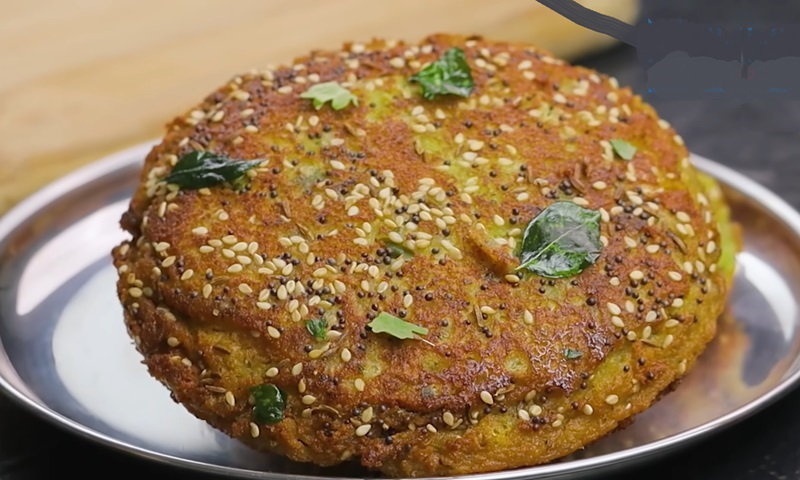
Handvo is a savory cake made from a fermented batter. It is a popular snack or breakfast option and is loved for its unique taste and texture. Handvo is made using a combination of lentils, rice, and various vegetables like bottle gourd, carrot, and spinach. The batter is spiced with ginger, green chilies, and other aromatic herbs and spices. To prepare handvo, the batter is mixed well and then poured into a greased pan. It is then cooked on a low flame until it becomes golden brown and crispy on the outside, while remaining soft and moist on the inside. The dish is usually served with a side of chutney or yogurt.
Sukhdi
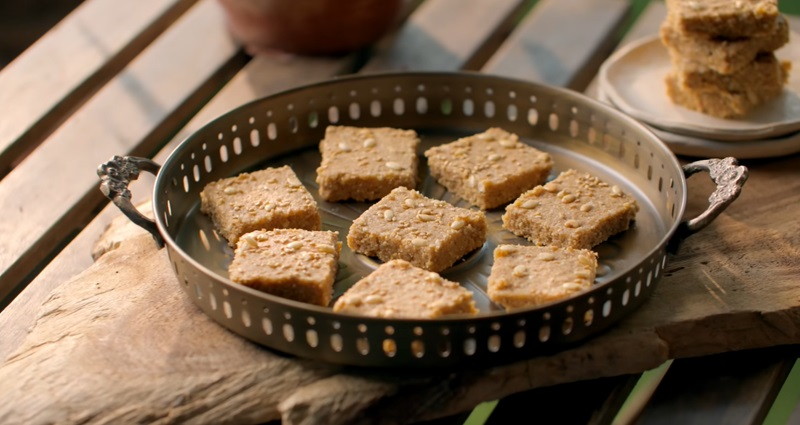
Sukhdi is a traditional Gujarati sweet dish that is made with just a few simple ingredients but is packed with delightful flavors. The main ingredients used in making Sukhdi are wheat flour, ghee (clarified butter), and jaggery. The wheat flour is roasted in ghee until it turns golden brown, adding a nutty aroma to the dish. Then jaggery, which is a traditional Indian sweetener made from sugarcane juice, is added to the mixture. The jaggery melts and binds all the ingredients together, giving Sukhdi its unique sweetness. The mixture is then poured into a greased pan and allowed to cool and set. Once it is firm, it is cut into square or diamond-shaped pieces. Sukhdi has a crumbly and melt-in-your-mouth texture with a rich and buttery flavor.
Khichu
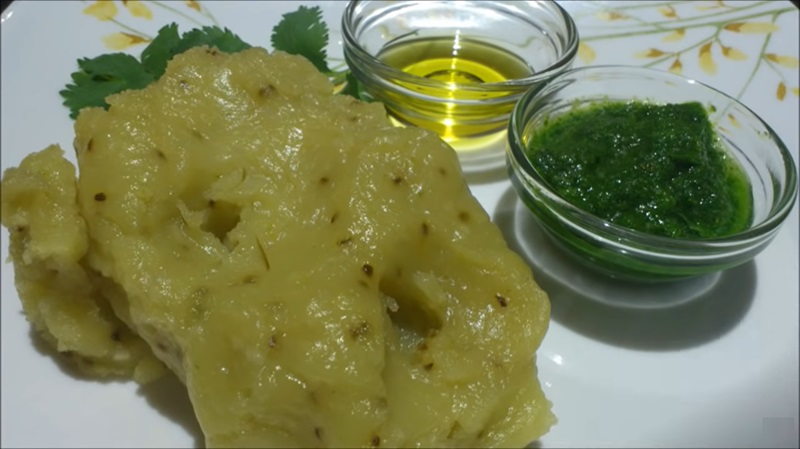
Khichu is a popular street food in Gujarat and is often enjoyed as a snack or breakfast item. Made from rice flour, Khichu has a smooth and dough-like consistency. To prepare Khichu, rice flour is cooked with water and seasoned with spices like cumin seeds, green chili paste, and ginger paste. The mixture is stirred continuously until it thickens and forms a sticky dough. It is then shaped into small dumplings or flattened discs. Khichu is typically served hot and accompanied by oil or ghee, which is drizzled over the dish.
Kansar
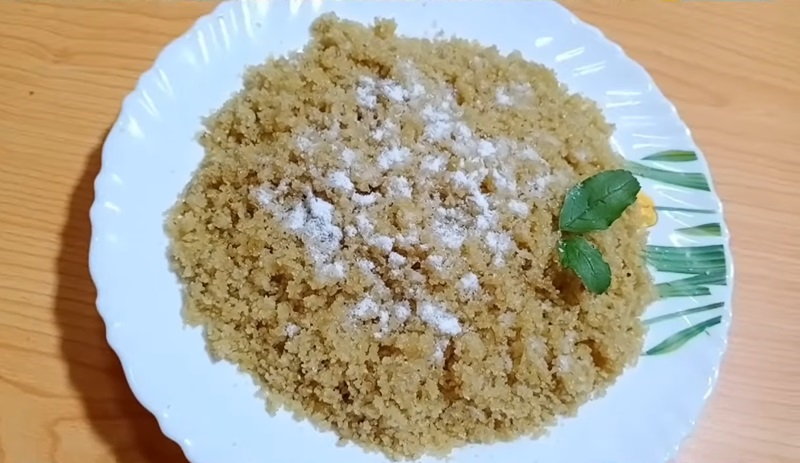
Kansar is a sweet dish made from wheat flour, ghee (clarified butter), and jaggery (unrefined sugar). To prepare Kansar, wheat flour is roasted in ghee until it turns golden brown. Then, jaggery syrup is made by dissolving jaggery in water and boiling it until it thickens. The roasted wheat flour is then mixed with the jaggery syrup, and the mixture is cooked on low heat until it forms a thick, smooth consistency. Kansar is typically served as a dessert during special occasions and festivals like weddings, birthdays, and religious ceremonies. It is often garnished with slivered almonds, pistachios, and raisins, enhancing its taste and presentation. The dish has a rich, sweet flavor and a soft, melt-in-your-mouth texture.
Sev Mamra
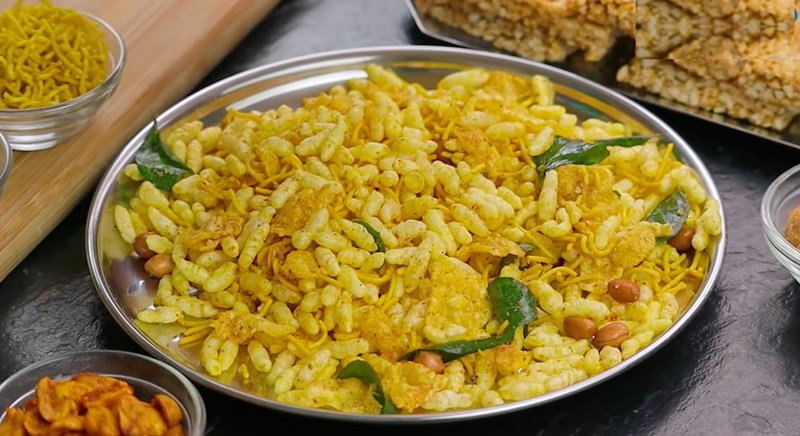
Sev mamra is a popular snack dish from the Gujarati cuisine that is loved for its delicious combination of flavors and textures. It is made from a mixture of puffed rice (mamra) and thin crispy noodles (sev). The dish is typically garnished with a variety of spices, chutneys, and vegetables that enhance its taste and add a burst of flavors. Sev mamra is a perfect blend of sweet, tangy, and spicy flavors, making it a delightful treat for the taste buds. I
Doodhpak
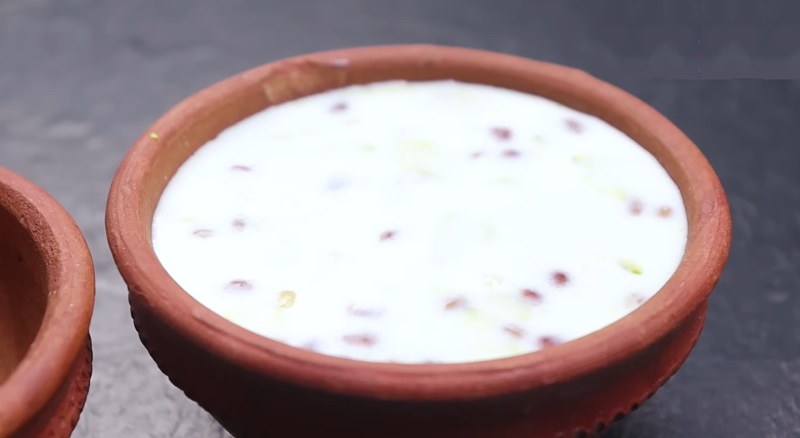
Doodhpak is a rich and creamy rice pudding made with milk, rice, sugar, and flavored with cardamom and saffron. The dish gets its name from the Gujarati words "doodh" which means milk, and "pak" which means cooked. To prepare Doodhpak, rice is cooked in milk until it becomes soft and mushy. The dish is then sweetened with sugar and infused with the aromatic flavors of cardamom and saffron. The result is a velvety smooth pudding with a hint of sweetness and a fragrant aroma that is hard to resist. Doodhpak is often served as a special treat during festivals and celebrations, especially during Diwali and Navratri. It is typically garnished with slivered almonds, pistachios, and raisins for added texture and taste.
Chhundo
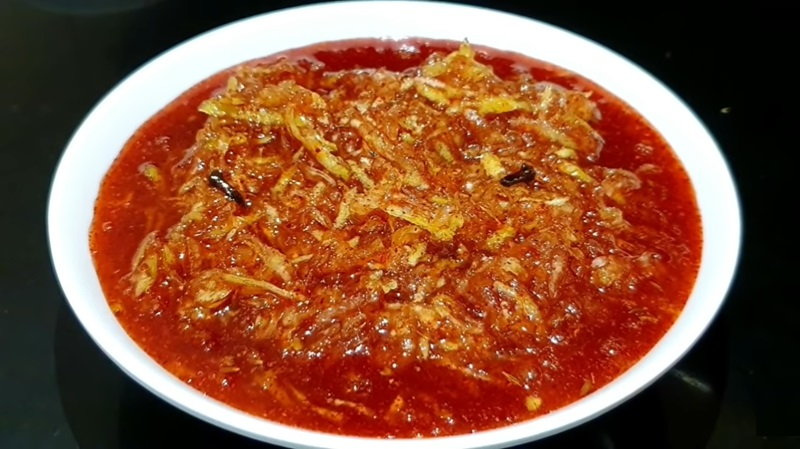
Chhundo is a popular Gujarati dish that is made from grated raw mangoes. It is a sweet and tangy pickle that is commonly served as a condiment or accompaniment to meals. The process of making chhundo involves grating raw mangoes and then cooking them with sugar and spices until they become soft and translucent. The unique flavor of chhundo comes from the combination of the tartness of raw mangoes and the sweetness of sugar. The addition of spices like cumin seeds, turmeric powder, and red chili powder adds a subtle heat and complexity to the dish. The texture of chhundo is slightly chunky, with the grated mangoes retaining their crunch while being coated in a thick, syrupy sauce. Chhundo is often enjoyed with traditional Gujarati meals like dal, rice, and roti.
Dhebra
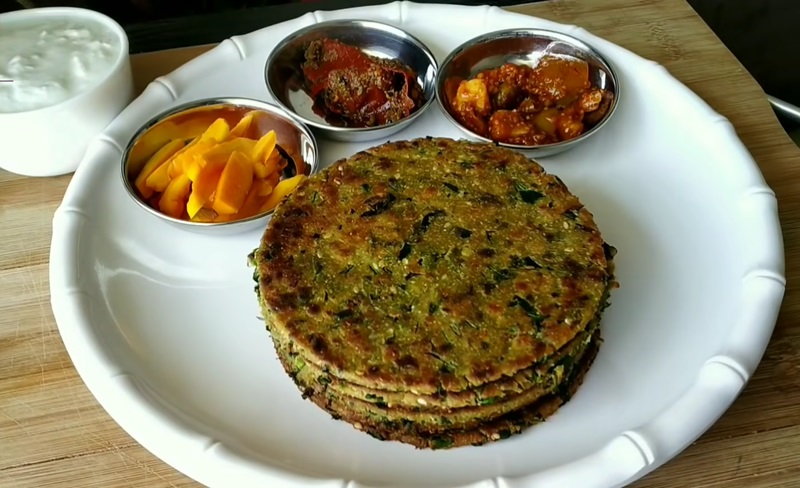
Dhebra is a type of bread made from pearl millet flour. To prepare dhebra, water and salt are blended with the millet flour to form a dough. The dough is shaped into balls and flattened into round discs using a rolling pin on a flat surface. These discs are then cooked on a griddle with vegetable oil until small brown spots emerge on both sides. Another variation is methi dhebra, which includes fenugreek leaves to enhance its flavor. This traditional Gujarati delicacy offers a delightful combination of textures and is enjoyed as a versatile snack or accompaniment.
Aamras
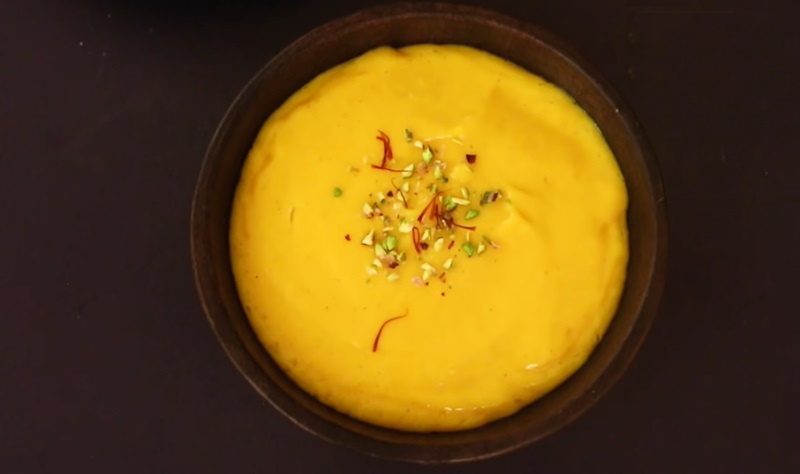
Aamras, a delightful Indian summer dessert, is a creamy and indulgent puree made from ripe mangoes. Originating from Western India, particularly Gujarat and Maharashtra, this sweet treat is cherished for its luscious texture and vibrant flavor. Ripe mangoes are peeled, pitted, and blended into a smooth consistency, often enhanced with a touch of sugar or cardamom for added sweetness and aroma. Aamras is typically served chilled, making it a refreshing and satisfying dessert during the hot summer months.
Puri
-1708514552.jpg)
Puri is a deep-fried bread made from unleavened wheat flour dough. The dough is rolled into small discs and deep-fried until it puffs up, resulting in a light, fluffy texture with a crispy exterior. Puri pairs well with a variety of dishes, including curries, chutneys, and pickles.
Roti
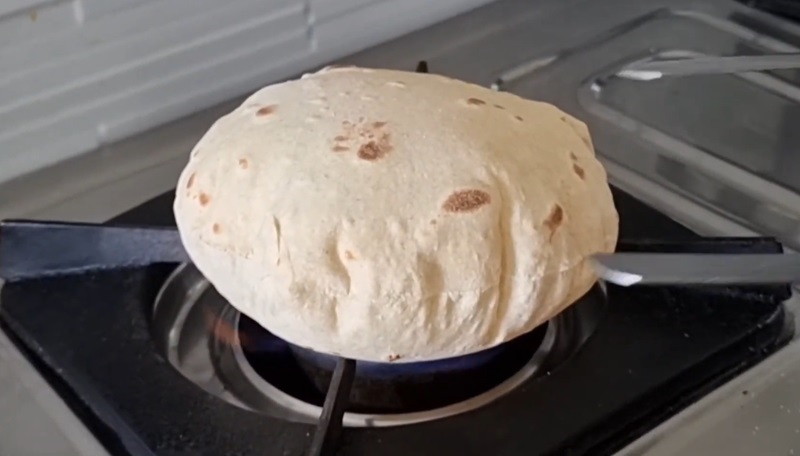
Roti is a simple and nutritious flatbread made from whole wheat flour, water, and sometimes a pinch of salt or oil. Roti is a staple in every Gujarati household and is enjoyed with various curries, vegetables, lentils, or pickles. The preparation of roti involves kneading the dough until it is soft and pliable, then rolling it into thin, round discs. These discs are then cooked on a hot griddle or tawa, where they puff up and develop a slight char. The result is a soft and slightly chewy bread with a deliciously nutty flavor.
Dal
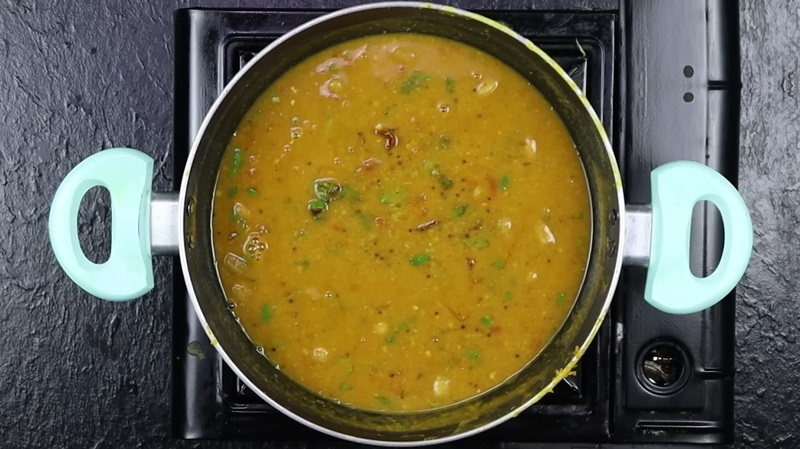
In Gujarati cuisine, dal, holds a cherished place as a staple dish. Typically made from split pulses like toor dal (pigeon peas) or moong dal (split mung beans), it's seasoned with a blend of spices including mustard seeds, cumin seeds, turmeric, and sometimes ginger and garlic. The dal is often tempered with ghee or oil, along with curry leaves and dried red chilies for added flavor. Gujarati dal is known for its slightly sweet and tangy taste, achieved by incorporating ingredients like jaggery or tamarind. It's usually served hot alongside rice or roti, forming a comforting and nutritious meal.
Chaat
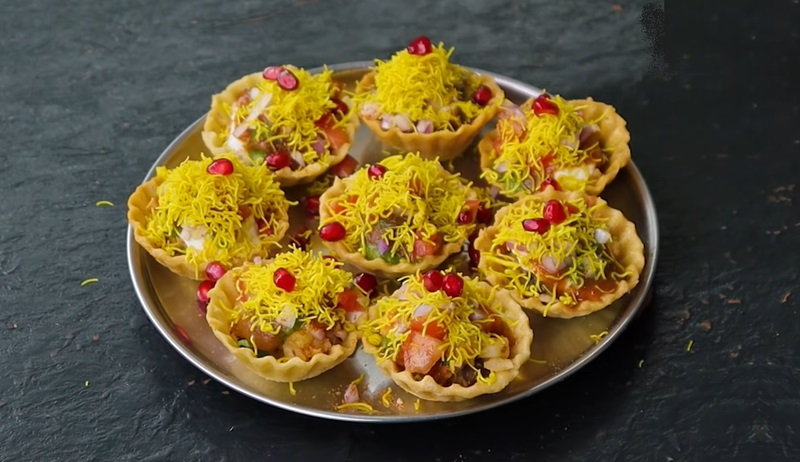
In Gujarati cuisine, chaat is a beloved street food snack enjoyed for its burst of flavors and textures. Typically, it consists of a base of crispy fried puris or papdis (crispy dough wafers) topped with a medley of ingredients such as boiled potatoes, chickpeas, chopped onions, tomatoes, and various chutneys. Gujarati chaat is known for its tangy and spicy flavors, achieved through the use of tamarind chutney, green chutney, and chaat masala. Additional garnishes may include yogurt, sev (crunchy chickpea flour noodles), and fresh cilantro. This delightful snack captures the essence of Gujarati street food culture, offering a delightful blend of sweet, sour, and spicy tastes.
Kulfi
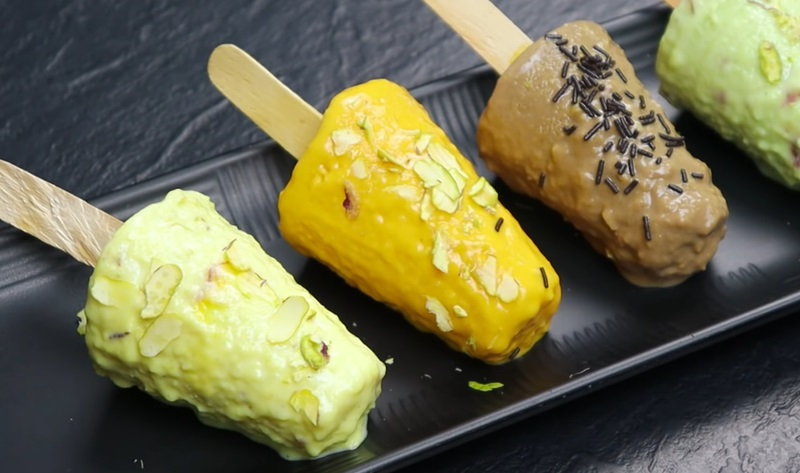
Kulfi is a popular frozen dessert adored for its creamy texture and rich flavor. It is made by simmering milk until it reduces and thickens, often flavored with cardamom, saffron, or pistachios for a fragrant touch. The thickened milk mixture is then poured into molds and frozen until firm. Unlike traditional ice cream, kulfi has a denser consistency due to its lower air content, resulting in a luxurious and indulgent treat.
Peda
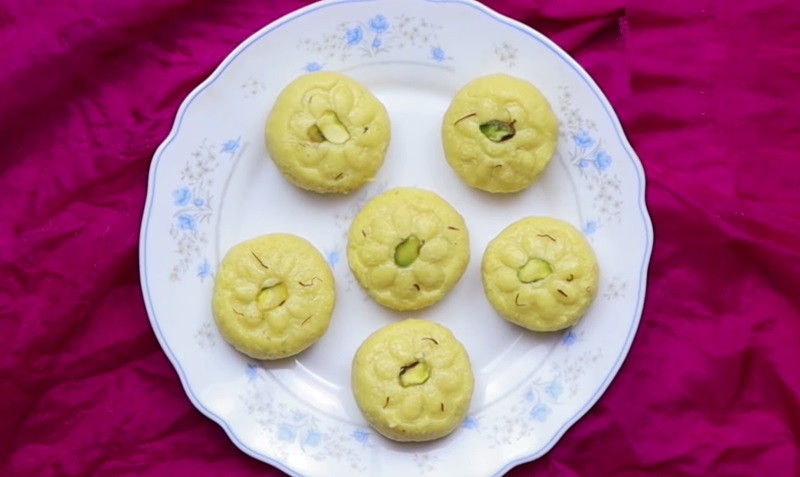
Peda is a popular dessert enjoyed during festivals, celebrations, and special occasions. Peda is made by simmering milk for an extended period until it thickens, and then sugar is added to sweeten it. The mixture is then flavored with cardamom, saffron, and sometimes nutmeg, which infuses the dish with a delightful aroma. The thickened milk is then shaped into small, round, and flattened discs. Peda is often garnished with pistachios, almonds, or cashews, adding a crunchy texture to the soft and creamy sweet. The rich and velvety texture of the Peda melts in your mouth, leaving a delightful burst of flavors. Peda is not only enjoyed as a dessert but also served as a traditional offering in temples and during religious ceremonies.
Khaja
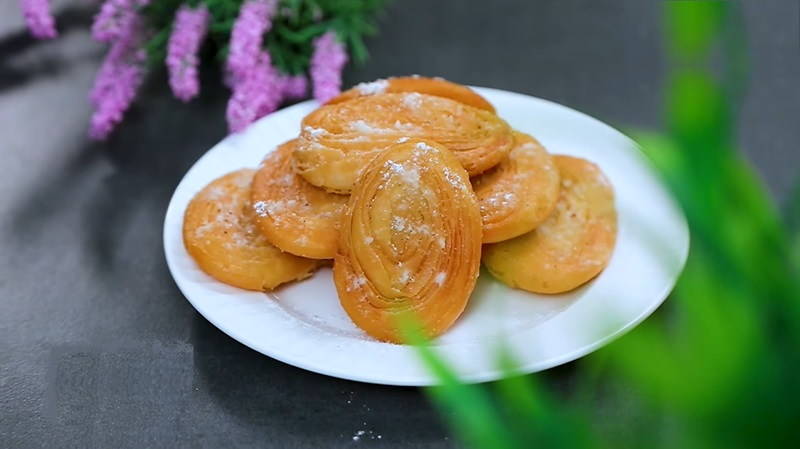
Khaja is a traditional sweet cherished for its exquisite layers of crispiness and sweetness. It is made from all-purpose flour, ghee, and sugar, kneaded into a dough, rolled thin, and fried until golden brown. It's then coated in a sugar syrup, adding a delectable sweetness and sheen to its surface. The process is repeated multiple times to create delicate, flaky layers. Khaja melts in the mouth, offering a perfect balance of crunch and sweetness, making it a beloved treat during festivals, celebrations, and special occasions across India.
Bhakri
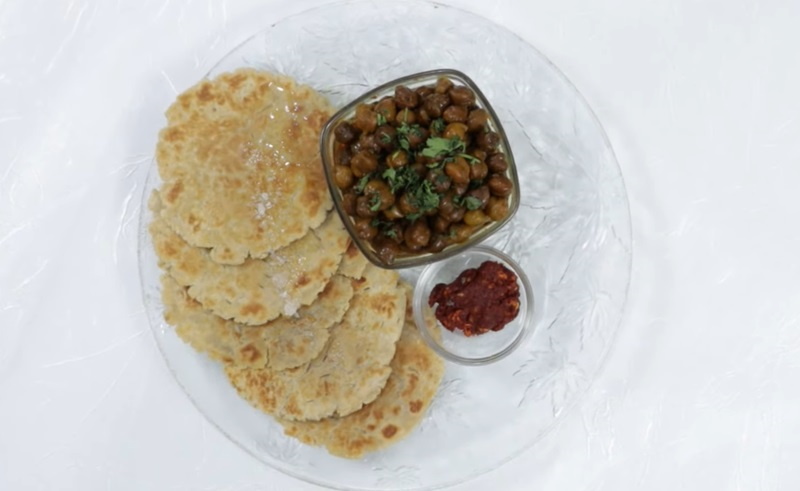
Bhakri, a staple of Gujarati cuisine, is a wholesome unleavened bread made from coarse grain flours like pearl millet or sorghum. Its dough, kneaded with water and sometimes a pinch of salt, is rolled into thick discs and cooked on a hot griddle until golden brown and crisp. Bhakri's rustic texture and earthy flavor make it a perfect accompaniment to savory dishes like curries, lentils, or chutneys. Traditionally, it's a popular choice for meals in rural Gujarat, celebrated for its simplicity, versatility, and ability to provide sustenance and satisfaction with every hearty bite.
Panjiri
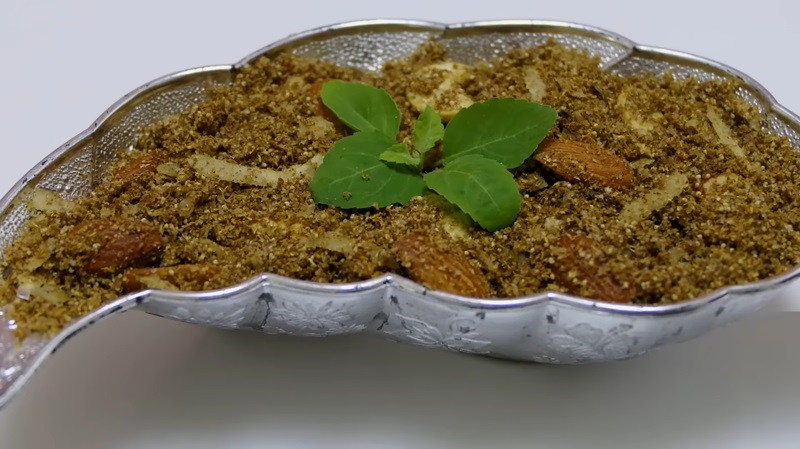
Panjiri is a traditional dish that is made with a combination of various ingredients like wheat flour, ghee (clarified butter), sugar, and nuts. It is often prepared during special occasions and festivals as it is believed to be highly nutritious and energizing. To make Panjiri, wheat flour is roasted in ghee until it turns golden brown, giving it a delightful aroma. Then, sugar, nuts (such as almonds, pistachios, and cashews), and dried fruits (such as raisins and dates) are added to the mixture, providing a delightful crunch and sweetness. Some variations of Panjiri also include spices like cardamom and nutmeg for additional flavor.






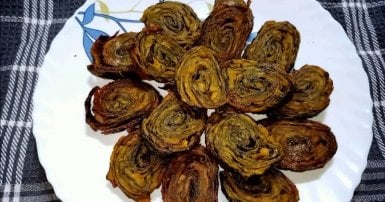
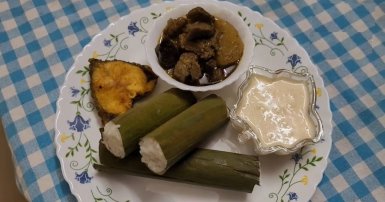
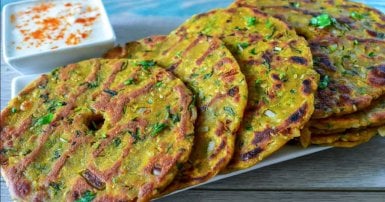
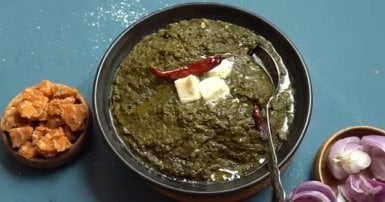
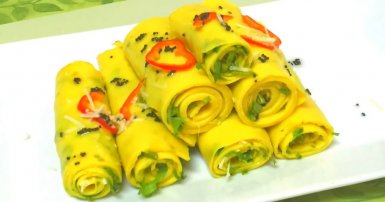
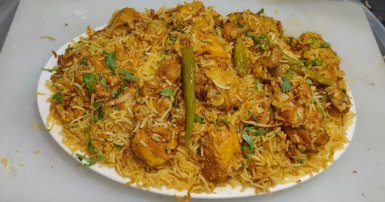

-1709813013.jpg)


